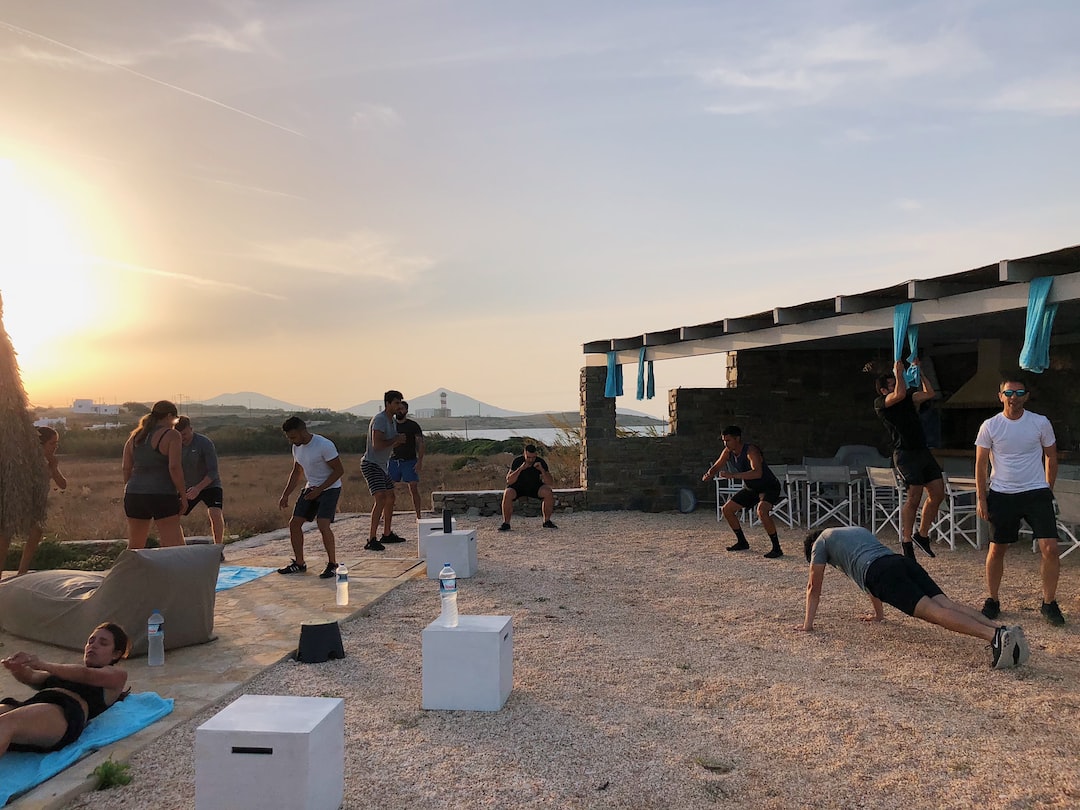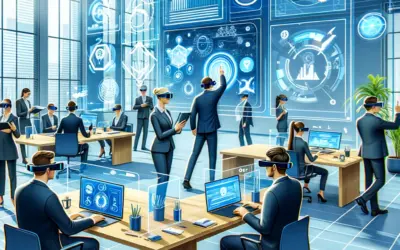1. What Is Virtual Reality Training and How Can Companies Benefit?
Virtual Reality (VR) training is an innovative and immersive approach to employee training and development. It allows companies to use virtual environments to simulate real-life scenarios in a safe and cost-effective way. With the help of virtual reality technology, companies can quickly and easily provide their employees with the skills and knowledge they need to perform their jobs better.
What Is Virtual Reality Training?
Virtual reality training is a way to use virtual reality technology to create simulated environments that replicate real-life situations. The environment can be tailored to the specific needs of the training program. For example, it can be used to simulate an office environment, a factory floor, or even a hazardous environment such as a fire or a hazardous material spill. With VR training, employees can practice and learn how to respond to different scenarios in a realistic and safe environment.
Benefits of Virtual Reality Training
Virtual reality training offers a variety of benefits to companies. It can be used to train employees quickly and cost-effectively, as the virtual environment eliminates the need for expensive physical training facilities. It also provides a more engaging and immersive learning experience than traditional methods, as employees can interact with the virtual environment and get a feel for how it works. Additionally, virtual reality training can be tailored to the specific needs of the company, ensuring that employees receive the most relevant and up-to-date training.
Examples of Virtual Reality Training
Virtual reality training can be used in a variety of industries. For example, it can be used to simulate hazardous environments such as a fire or hazardous material spill, allowing employees to practice how to respond to these situations. It can also be used to simulate office environments, allowing employees to practice their customer service skills and learn how to use office equipment. Additionally, it can be used to simulate factory floors, allowing employees to practice how to operate machinery and learn safety protocols.
2. Advantages of Using Virtual Reality Training for Companies
Virtual Reality (VR) technology has been rapidly gaining traction in the training industry as a powerful tool for teaching and developing skills. With the help of VR, companies can provide their employees with engaging, immersive experiences that can be tailored to their specific needs. VR training has many advantages that can help businesses improve their training programs and increase their productivity.
Cost Savings
One of the main advantages of using VR training for companies is the potential for cost savings. Traditional training methods, such as classroom instruction, require large investments in resources such as training materials and instructor time. VR training eliminates these costs as it can be delivered in a virtual environment with minimal equipment and no instructor required. This can significantly reduce the costs associated with training and allow companies to invest more in other areas of their business.
Flexibility
Another advantage of VR training is the flexibility it provides. VR training can be tailored to the specific needs of a company, allowing them to quickly and easily adjust the content and delivery of their training program. This flexibility makes it easy for companies to adapt their training program to changing business conditions or to accommodate new employees.
Engaging Experiences
VR training also provides a more engaging experience for employees. By immersing them in a virtual environment, employees can learn and practice skills in a more interactive and engaging way than with traditional training methods. VR training also allows for more feedback and real-time assessment, helping to ensure that employees are able to retain the information and skills they have learned.
Real-World Applications
Finally, VR training can provide employees with the opportunity to practice and apply their skills in a realistic setting. This can be especially beneficial for employees who are training for positions that involve real-world applications, such as in the medical or engineering fields. By using VR training, employees can gain valuable experience in a safe and controlled environment.

3. Understanding the Technology Behind Virtual Reality Training for Companies
Virtual reality (VR) training is an innovative technology that is being used by companies to improve the training experience of their employees. VR training enables employees to experience realistic simulations of their workplace and scenarios, allowing them to gain experience and knowledge in a safe and immersive environment. By leveraging the power of virtual reality, companies are able to provide more engaging and interactive training experiences.
Types of Virtual Reality Training
Virtual reality training can be used for a variety of different training scenarios. Companies can use VR to train their employees in a variety of topics, from safety protocols to customer service. VR can also be used to train employees on how to use specific tools and equipment, as well as how to navigate complex systems. Additionally, VR can be used to create virtual simulations of a workplace environment, allowing employees to gain hands-on experience without the risk of making mistakes in a real-life setting.
The Benefits of Virtual Reality Training
Virtual reality training offers numerous benefits to companies. VR training can be used to reduce the cost of training and make it more efficient. Additionally, VR training can be used to create a more immersive and engaging learning experience, as well as to reduce the risk of mistakes being made in a real-life setting. Additionally, VR training can be used to create a more personalized learning experience, as it can be tailored to the individual needs of each employee.
The Technology Behind Virtual Reality Training
Virtual reality training is powered by a variety of different technologies. VR headsets, motion tracking sensors, and controllers are all used to create the immersive experience. Additionally, software and platforms are used to create the virtual environments and simulations. Companies can also use VR content creation tools to create custom content for their training scenarios. By leveraging the power of these technologies, companies can create an engaging and interactive virtual training experience for their employees.
4. Overcoming Challenges of Implementing Virtual Reality Training in Companies
Virtual reality (VR) technology has been increasingly adopted by companies to enhance their employee training programs. VR allows employees to receive instruction in a virtual environment, instead of a physical one, and can help to create a more engaging learning experience. However, there are certain challenges that companies must overcome when implementing VR training programs.
Costs
The first challenge that companies face when implementing VR training is the cost. Setting up a VR training program requires investment in VR headsets, computers, and other hardware. Additionally, VR training programs require specialized software, which can also be expensive. To help offset the costs, companies should look for ways to repurpose existing hardware and software, or seek out cost-effective solutions.
Data Security
Another challenge of implementing VR training is data security. Companies must ensure that their data is protected from cyber threats, and that their employees’ private information is not exposed. Companies should take steps to ensure that all data is encrypted and stored in a secure environment. Additionally, companies should ensure that their VR training programs are regularly updated to address any potential security issues.
User Experience
Finally, companies must consider the user experience when implementing VR training. VR technology can be difficult to use, and if users are not comfortable with the technology, they may be less likely to use it. Companies should ensure that their VR training programs are easy to use and that employees are provided with adequate support and instruction. Additionally, companies should seek feedback from their employees to ensure that the VR training program meets their needs.
5. Key Takeaways for Companies Considering Virtual Reality Training
Virtual reality (VR) training is becoming a popular option for companies looking to improve the skills of their employees. The technology provides a unique, immersive experience that can help employees learn quickly and retain information more effectively. Here are five key takeaways for companies considering virtual reality training:
1. Cost Savings – VR training can provide cost savings compared to traditional methods. It eliminates the need to rent physical spaces or buy expensive equipment, and also eliminates the need to hire outside trainers. Additionally, VR training can help reduce travel costs, as employees can participate from anywhere.
2. Improved Learning Outcomes – VR training can improve learning outcomes compared to traditional methods. It is more engaging, interactive, and immersive, which can help employees understand and remember concepts more effectively. Additionally, it can provide a safer learning environment than traditional methods, as employees can learn in a simulated environment without the risks of real-world situations.
3. Improved Safety and Productivity – VR training can improve safety and productivity in the workplace. By providing a simulated environment, employees can practice in a safe environment and become more proficient in their skills before applying them in the real world. Additionally, VR training can help reduce the need for costly repairs and improve employee morale.
4. Enhanced Learning Experiences – VR training can provide enhanced learning experiences compared to traditional methods. It can create more engaging and interactive experiences, allowing employees to better understand and remember concepts. Additionally, it can provide a personalized learning experience, as companies can tailor the training to their specific needs.
5. Increased Retention – VR training can help increase retention of information. It is more immersive and engaging, which can help employees understand and remember concepts more effectively. Additionally, it can provide a simulated environment, allowing employees to practice their skills and become more proficient.












0 comentarios